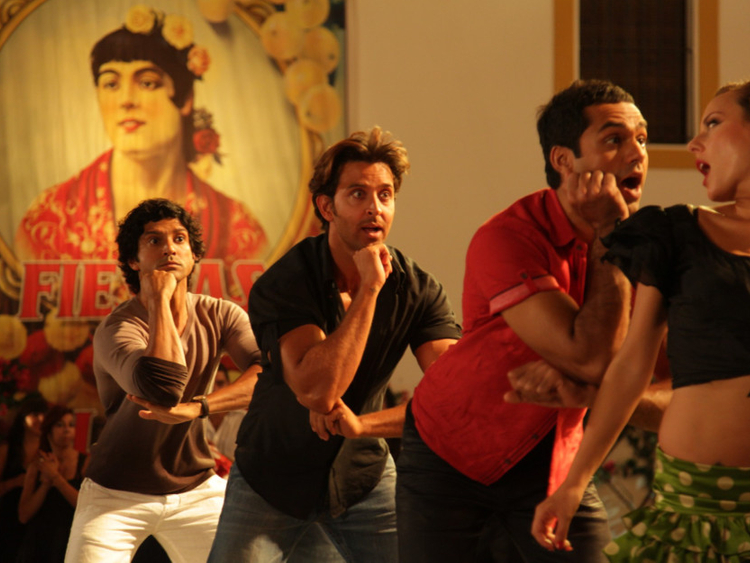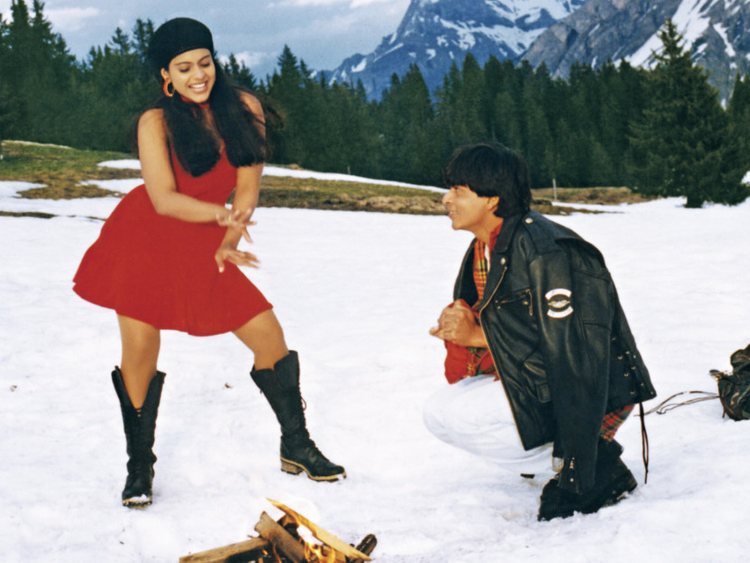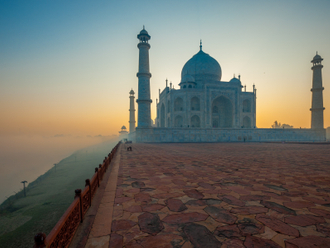
Alexandra Kemmerer is happiest watching a three-hour-long Shah Rukh Khan movie. In an age where most prefer the brevity of Twitter, Kemmerer runs a blog that showcases an encyclopedic knowledge of Indian cinema. “My first Bollywood movie was Dilwale Dulhaniya Le Jayenge,” the 41-year-old Beijing resident tells GN Focus. “I have been hooked since.”
New York resident Michael Barnum runs the Bollywood blog Pedro (The Ape Bomb), which takes its name from Pedro, the now-forgotten chimp that worked with mainstream actors in the 1950s and 1960s. The 2003 film Dhadkan turned him into a Hindi movie fan, and he now boasts a collection of 500 DVDs and film posters.
South Korean fan Jung Kwanghyun is the president of the Korea India Film Association and its 14,000 members, most fans of King Khan. Jung even prefers to be called Rahul — SRK’s on-screen name in several potboilers.
Kemmerer, Barnum and Jung represent the new fans of Hindi cinema — global in outlook and non-Indian. From Germany and the US, to the UK and as far afield as Finland, new audiences are turning to Bollywood. Birgit Pestal, author of Faszination Bollywood, which analyses Hindi cinema’s impact on Europe in German, believes there are about 50,000 viewers in Austria and Switzerland, and one million in Germany. “Diehard fans in Germany go to Bollywood parties,” she says. “They wear saris, bindis, bangles, and some even learn Hindi.”
Big Business for Bollywood
Kumar Ahuja, President, Business Development at Eros International Media, believes by individual ticket sales, Hindi cinema is the No 1 movie industry on the planet. “We estimate more than two billion people will watch Bollywood films in cinemas in 2016,” he tells GN Focus. “Of these, about 10 per cent would not be in India and may not even be Indians.”
Some stats to back his case: Saif Ali Khan’s Cocktail grossed more than $100,000 (Dh367,000) at the box office in new markets such as Kazakhstan and Kyrgyzstan. Dhoom 3 was dubbed in Mandarin and collected $1.35 million on the opening weekend. Big hit PK snagged $47 million in global markets, a chunk of which came from Central Asia, China, Japan and Belgium. Gauri Shinde’s English Vinglish earned $1.6 million in Japan, while Ritesh Batra’s offbeat The Lunchbox collected Rs272.2 million (about Dh14.9 million) in France alone.
“These non-traditional markets can [perform] only when you can work with local partners in foreign markets and make the business mutually beneficial,” says Avtar Panesar, Head of International Distribution at production house YRF.
Tourism campaign for destinations
Seeing the world as a stage for their extravagant dramas is not a new phenomenon for Indian directors. Raj Kapoor’s 1964 magnum opus Sangam was the first Indian movie to be shot across London, the Vatican, Rome, Paris and Switzerland. Several others followed. But these were largely a bid to bring glimpses of the world to Indians who rarely travelled internationally in the early days after India’s independence.
The tables have turned, and how. Tourism boards and government authorities are wooing Indian film-makers to shoot in their country, conscious of the sway movies have on Indian travellers. The late Yash Chopra, through his colossal 1995 hit Dilwale Dulhaniya Le Jayenge, had put Switzerland on the travel map for Indians. This picturesque European country now offers Bollywood-packaged trips to Gstaad and has even named one of the Jungfrau Railways trains the Yash Chopra Express.
New age film-makers are veering off the Swiss path to help Indians discover other parts of the world, encouraged in part by the facilities governments across the world offer as incentive. Imtiaz Ali, who shot parts of Tamasha in Corsica, France, and Rockstar in the historical Czech capital city of Prague, says, “You get a lot of subsidies from tourism boards when you are shooting in their country. You also have everything handled for you — the backend, the infrastructure, the permissions and licenses required to shoot there. However, I choose a destination only if it fits my story.”
Radka Neumannova, Director — India at Czech Tourism, says they offer film-makers up to 20 per cent rebate. “In India, cinema is such a strong media and communication platform, and we would like to expand the visibility of the Czech Republic through the movies.”
The extent to which a successful Bollywood film can affect a country’s tourism earnings can be gauged by the experience of Spanish tourism. “After the release of Zindagi Na Milegi Dobara in 2011, tourism authorities in the country received 600,000 enquiries from India,” says Madhu Salyankar, Marketing Head of the Spanish tourism authority Turespaña. “One of the film’s sequences was shot at the famous Tomatino festival, which prompted travellers from India to visit Spain. The number of visas issued to Indians after the movie went up 50-60 per cent.
“We offer facilitation with visas, discounts for hotel stays and travel, VAT refund of about 18 per cent, as well as faster approvals.”
While the tourism board didn’t finance the $11-million film, it contributed on-the-ground support and other subsidies worth another $660,000, including airing two 30-second ads from its global agency, which were essentially clips from the film that close with Turespaña’s logo.
Some tourism boards also offer outright cash of up to a few million dollars to woo producers, says Rajeev Nangia, Associate Director of Trac Representations, which represents tourism boards including Monaco, Kenya, Jamaica and Mauritius in India. Trac had initiated the Spain tourism board’s involvement with the producers of ZNMD.
Ritesh Sidhwani, who co-owns Excel Entertainment with Farhan Akhtar, says they received huge support from Germany while shooting Don 2. “Countries are realising what films can do as they showcase their locations as per the script. This becomes important as the number of Indians travelling abroad is growing.”
Expanding horizons
Among the new countries in the market for Bollywood cinema are Israel, Ireland, Poland and Fiji Islands, whose government is willing to give producers a payback of 35 per cent of the cost incurred on shooting. The Singapore Tourism Board even recently invested $6.3 million under its Film in Singapore scheme, which subsidises international film productions by up to 50 per cent.
Bollywood has functioned, to some extent, as a brochure for exotic locales and this is true for its glamorous international awards shows too. Local officials in Yorkshire, which hosted the IIFA Awards in 2007, say the region’s economy was boosted by nearly £10 million (about Dh52.9 million) through tourism from Indians soon after.
“For an Indian, there is nothing as influential as a Bollywood movie,” says Sidhwani. “It is not mere entertainment. It is a pop culture influencer, a platform to experience the rest of the world.”








